| Published in Attractions / Places of Interest |
Bryce Canyon National Park
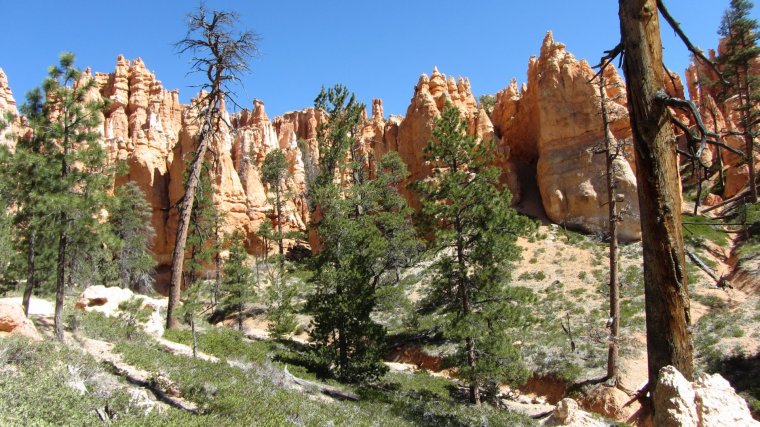
Bryce Canyon National Park is located in southwestern Utah. Despite its name, is not a canyon, but a collection of giant natural amphitheaters along the eastern side of the Paunsaugunt Plateau.
Bryce is distinctive due to irregular columns of rock called hoodoos, formed by frost weathering and stream erosion of the river and lake bed sedimentary rocks. The red, orange, and white colors of the rocks provide spectacular views for park visitors.
Archaeological surveys of Bryce Canyon National Park and the Paunsaugunt Plateau show that people have been in the area for at least 10,000 years. Paiute Indians in the area developed a mythology surrounding the hoodoos in Bryce Canyon.
They believed that hoodoos were the Legend People whom the trickster Coyote turned to stone. At least one older Paiute said his culture called the hoodoos Anka-ku-was-a-wits, which is Paiute for "red painted faces".
The Bryce Canyon area was settled by Mormon pioneers in the 1850s and was named after Ebenezer Bryce, who homesteaded in the area in 1874. The area around Bryce Canyon was originally designated as a national monument by President Warren G. Harding in 1923 and designated as a national park by Congress in 1928.
The park covers 145.02 km2 and receives substantially fewer visitors than Zion National Park (nearly 4.3 million in 2016) or Grand Canyon National Park (nearly 6 million in 2016), largely due to Bryce's more remote location.
In 2018, Bryce Canyon received 2,679,478 recreational visitors, which was an increase of 107,794 visitors from the prior year.
Bryce Canyon National Park in Pictures
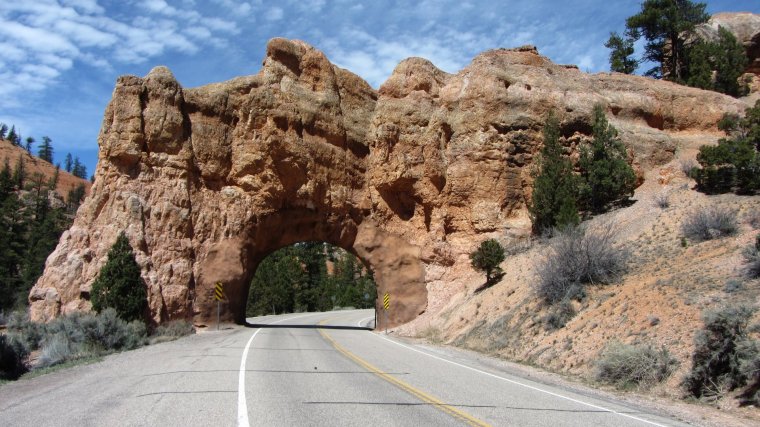
Red stone arch on highway 12 to Bryce Canyon
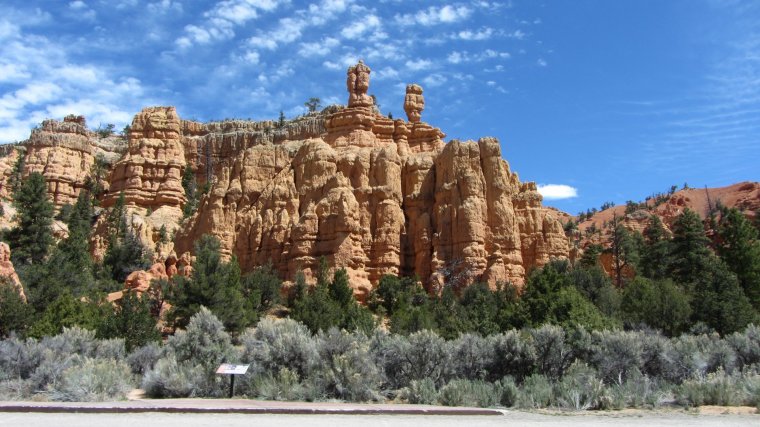
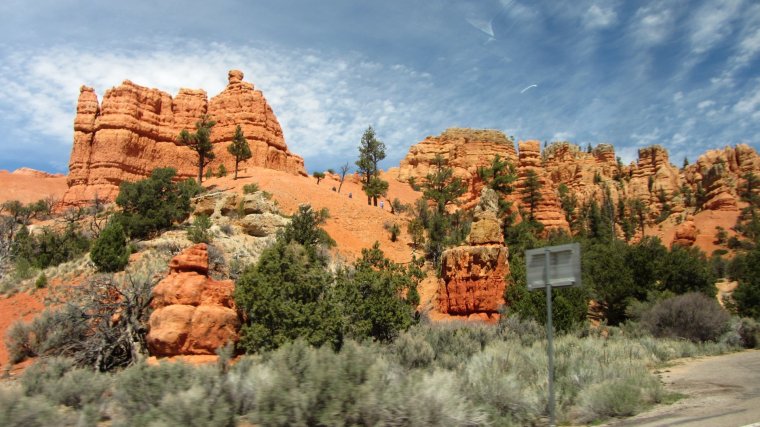
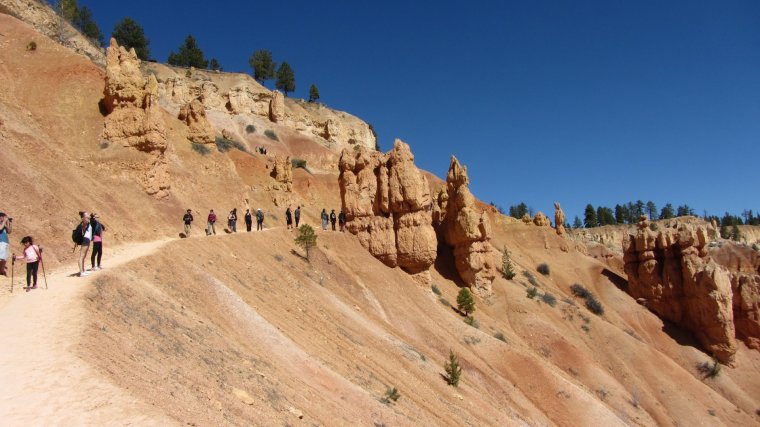
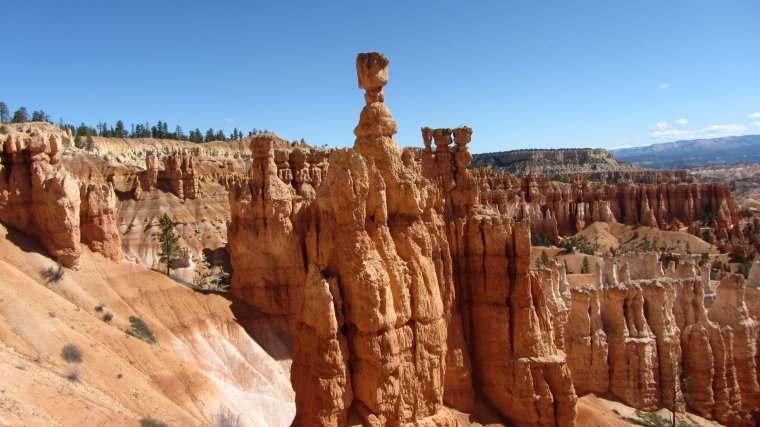
Thor's Hammer
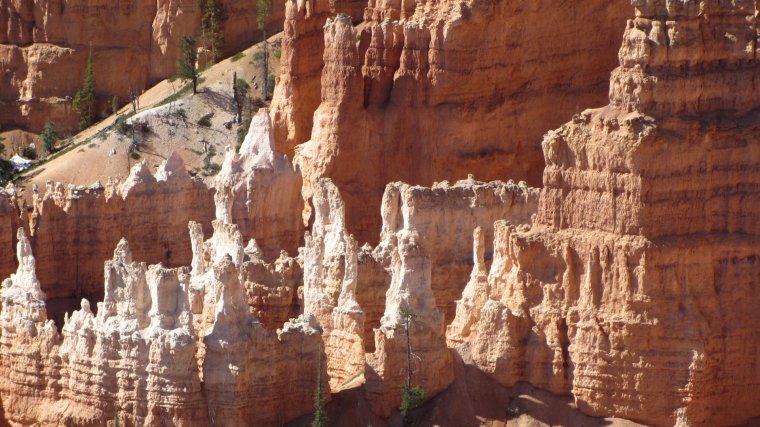
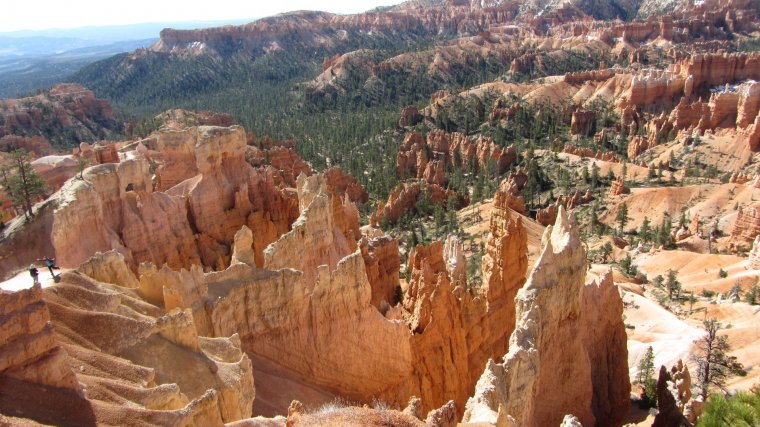
View from Inspiration Point
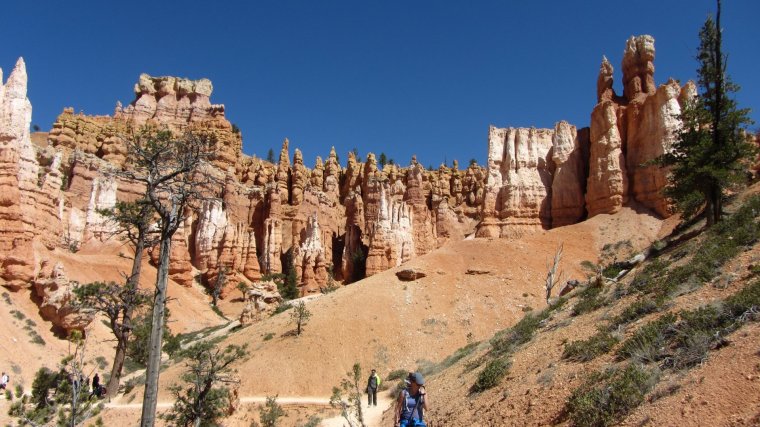
DANIEL ŞTEFĂNIŢĂ
YOU MAY ALSO LIKE
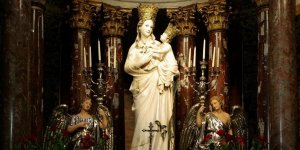




 If you own or manage a travel-related business such as a hotel, a bed-and-breakfast, a restaurant, a pub or a cafeteria, you can create a web page for your business for free on Titi Tudorancea Travel Info. » |
